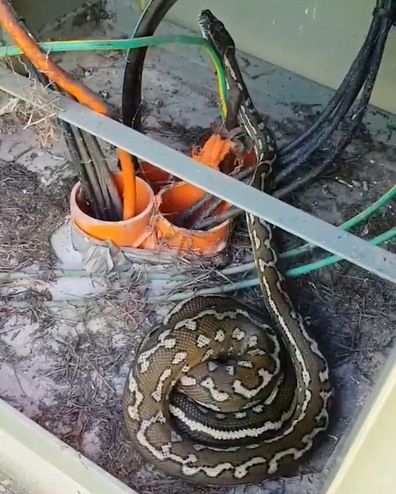A team of Australian electricians were carrying out routine maintenance on street lights near Brisbane recently when they came across an expected work hazard: a hefty carpet python that had taken up residence in one of the control boxes.

Undeterred by the snake, the team opted to leave it be – after all, a rodent-gobbling python is a great way to keep rat populations under control. “He still lives there today as rat damage is common,” one of the electricians explained to Viralhog. “They chew the insulation on the cables inside … we decided to leave him there to eat the rats or deter them from building a nest inside the switchboard.”

Rats – along with other small mammals, frogs, lizards and birds – make up the majority of the carpet python’s diet, so the snakes can be an effective deterrent against pesky rodents. Carpet pythons are widespread throughout much of northern, eastern and southern Australia where they have slithered their way into forests, coastal heaths, park lands and suburban gardens (not to mention the occasional electrical box). Unlike some of the nation’s more infamous serpentine inhabitants (we’re looking at you inland taipan), carpet pythons are not armed with venom. While they can deliver a nasty bite that, if directed at a human, may require a tetanus injection, it is not fatal.









